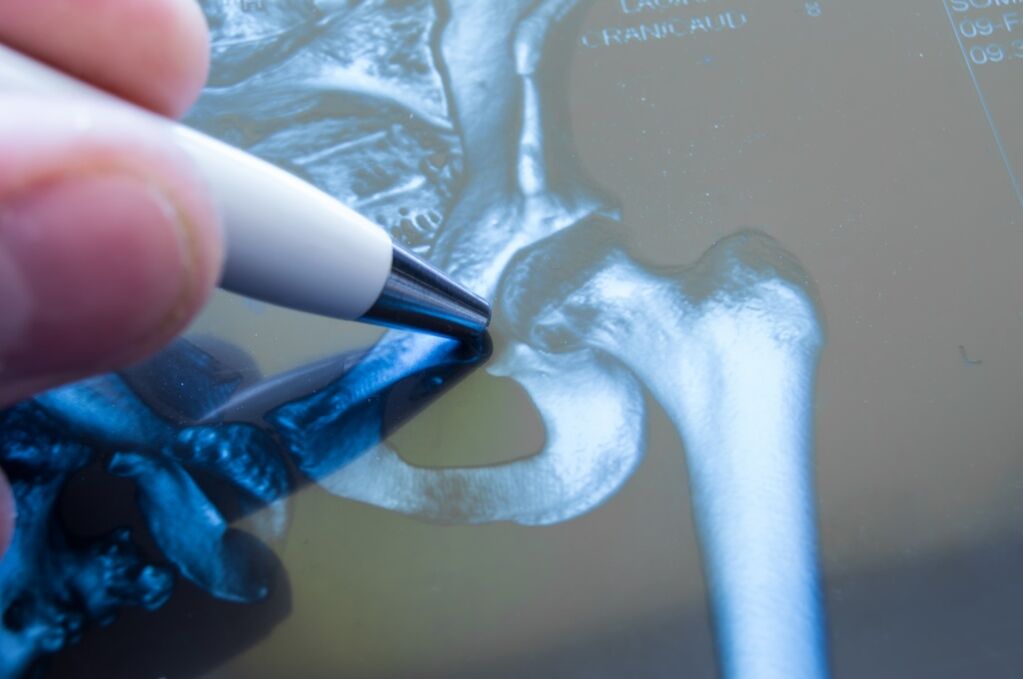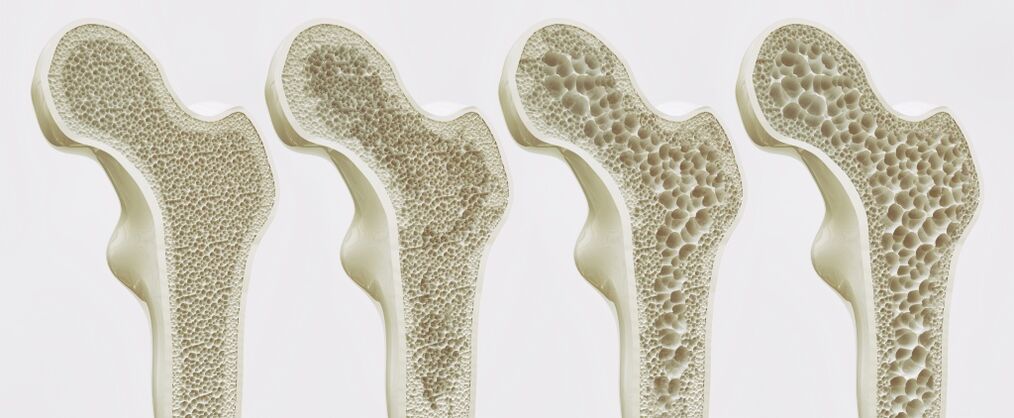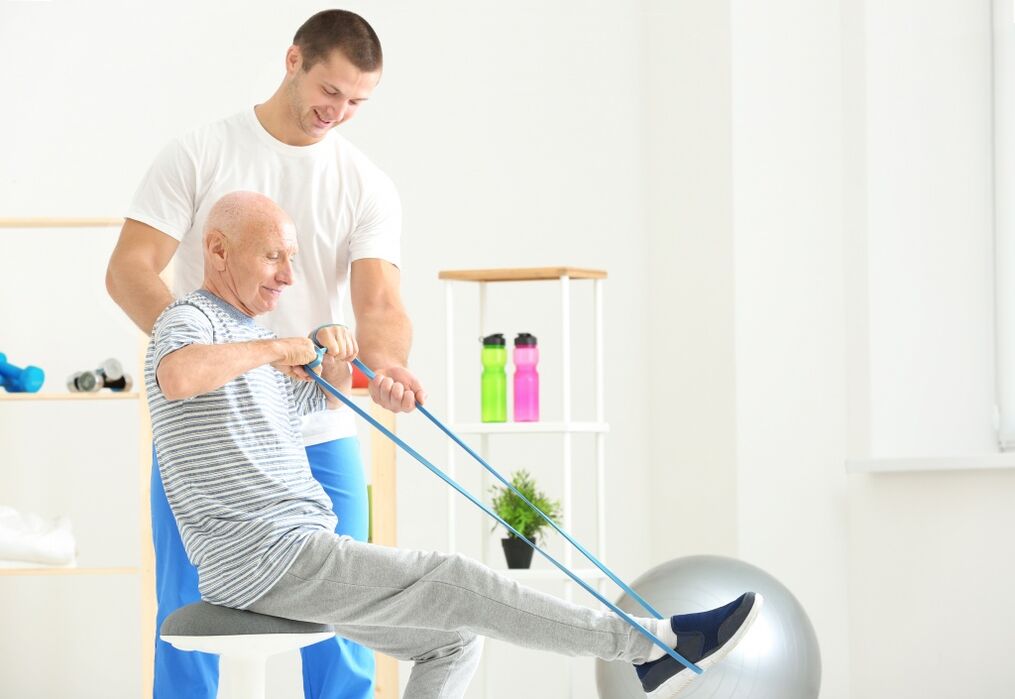
Osteoarthritis of the hip joint (coxarthrosis) is a degenerative disease of the cartilage of the hip joint, which leads to permanent dysfunction of the joint and damage to the patient. Osteoarthritis of the hip joint can be found more often in elderly patients, and men get sick more often than women.
Classification of osteoarthritis of the hip joints
There are two main types of disease:
- primary - the onset of the disease against the background of complete well-being;
- secondary - develops against the background of inflammatory joint disease, after previous injury, as well as in the presence of congenital disorders of the development of the hip joint, its dysplasia.
Causes of coxarthrosis
Based on the reasons for the development of osteoarthritis of the hip, the following types are distinguished:
- idiopathic - coxarthrosis, which develops without a specific cause;
- involutive - osteoarthritis associated with age-related changes, natural for the body, manifests itself in old age;
- dysplastic (congenital) - arthrosis, which develops in the joint against the background of congenital anomalies of its development;
- post-infectious - osteoarthritis that develops in the joints affected by rheumatoid arthritis, as well as due to some other infections;
- post-traumatic - arthrosis, which develops as a result of traumatic joint damage;
- dyshormonal - coxarthrosis, which develops against the background of metabolic disorders due to diseases of the endocrine system or hormone therapy;
- vascular - the disease develops as a result of circulatory disorders in the joint;
- hereditary - developing as a result of hereditary features of the development of cartilage tissue (often combined with deforming osteoarthritis of other joints).
In addition, osteoarthritis of the hip may be the result of a violation of the biomechanics of body movement, which often accompanies a curvature of the spine, intervertebral hernias or defects in the skeletal system of the lower extremities (eg shortening of one of them). Lameness or poor posture puts excessive stress on the hip joint, which can cause coxarthrosis. Another common cause of coxarthrosis is inaction, but excessive physical activity (sports or work) can also cause joint pathology.
How does osteoarthritis of the hip joint manifest itself?

First, patients with coxarthrosis complain of hip pain. It is accompanied by lameness, over time there is atrophy of the thigh and gluteal muscles. The movement in the joint is accompanied by a characteristic crisis; over time, joint mobility decreases. The intensity of the symptoms directly depends on the degree of the disease.
Coxarthrosis 1 degree
The initial stage of the disease is manifested by mild pain, which may be bothersome in the morning or after significant physical exertion of the joint. Meteorological sensitivity of the affected joint can also be noted, which manifests itself with pain when the weather changes. The patient may notice morning stiffness in the joint, which disappears after movement, a slight warming.
X-ray changes are minimal - there may be a slight narrowing of the joint space, thinning of the cartilage covering the head of the femur.
Grade 2 coxarthrosis
The intensity of pain at this stage of the disease increases slightly, while the pain radiates to the groin, knee. There are frequent cases of misdiagnosis of coxarthrosis associated with pain radiating to the knee and knee joints. The pain begins to bother not only after exercise, but also at rest. During the movement of the limb, foreign sounds emitted from the joint (clicks, crunch) appear. The range of motion in the joint is significantly reduced, especially rotational (circular), the biomechanics of movement in the joint is impaired and, accordingly, its functionality is reduced. Pain and reduced mobility in the joint provokes the appearance of mild lameness, which in turn leads to moderate atrophy of the gluteal muscles on the side of the affected joint.
The radiograph shows a narrowing of the joint space by one third of its normal width, a significant thinning of the cartilage to its absence in some areas, the appearance of osteophytes on the joint surfaces, deformation of the femoral head and its displacement upwards.
Coxarthrosis degree 3
At this stage of the disease the pain becomes constant, including at night, painkillers are difficult to relieve. The range of motion in the joint is reduced to a minimum, the biomechanics of the joint is significantly impaired. The slightest movements are accompanied by crepitation, lameness becomes pronounced, there is a significant curvature of the pelvis and shortening of the limb on the side of the affected joint. The gluteal and thigh muscles on the affected side are atrophied. Due to significant lameness, patients are often unable to move on their own without the use of a cane or support.
X-ray examination revealed a pronounced deformity of the femoral head, thickening of the femoral neck. The joint surfaces are covered with bone growths, the joint space is so narrowed that it is practically absent.
Diagnosis of osteoarthritis of the hip
Diagnostic measures begin with interviewing the patient and his examination, taking a number of laboratory tests, and then using special instrumental techniques to confirm the diagnosis. The following methods are considered the most informative today:
- X-ray examination -allows you to see the contours of the joint surfaces, the presence or absence of bone growths on them, to determine the presence of deformations of the femoral head and the width of the joint space;
- Ultrasound of the jointsallows not only to examine the joint surfaces, but also to identify dystrophic changes in the joints;
- computed tomography (CT)- allows to obtain layered images by X-ray type, but clearer and more voluminous;
- magnetic resonance imaging (MRI) -allows you to examine the condition of joint structures, joint surfaces, bones and ligaments with a high degree of visualization. It is currently considered the most modern diagnostic method.
Treatment of coxarthrosis
The most effective is the complex treatment of osteoarthritis of the hip, taking into account the stage of the disease. It should be remembered: the earlier treatment is started, the more likely it is to avoid disease progression, immobilization of the patient and loss of ability to work. Therefore, even with the slightest discomfort in the joint, seemingly insignificant pain, stiffness, weather sensitivity of the joint, you should consult an orthopedist, who will examine, clarify the diagnosis and prescribe treatment. Cartilage tissue does not recover, so it is better not to wait for the moment when its damage is significant, but to begin treatment at the stage of cartilage malnutrition, until irreversible changes develop in it.

The scope of treatment depends on the stage of the disease. So, with coxarthrosis of the first degree, non-narcotic analgesics and NSAIDs are used - they allow you to eliminate the pain syndrome, as well as eliminate inflammation in the tissues of the joint, preventing further tissue damage. Due to the fact that at this stage the pain and inflammation syndrome are not intense, there is no need for long-term use of such drugs. As a rule, it is enough to do with local means - ointments, gels containing NSAIDs. At this stage it is much more important to ensure the normalization of metabolic processes in cartilage tissue, to minimize its degeneration, for which drugs from the group of chondroprotectors are used. Their task is to restore the metabolism in the cells of the cartilage tissue, as a result of which the trophism of the joint improves and the intensity of the inflammation decreases. For example, in the treatment of coxarthrosis, a chondroprotective drug whose active substance is a source of natural components of healthy cartilage tissue has been well proven. It stimulates the production of the most important structural components in cartilage - proteoglycans and prevents the destruction of cartilage tissue.
Complete treatment of second and third degree coxarthrosis is now much more difficult: the cartilage is already significantly damaged, the joint surfaces are exposed, osteophytes form on them in large numbers, which impede the normal movement of the joint. At this stage, only symptomatic treatment is possible, which makes it possible to reduce joint pain and slow down the processes of cartilage destruction. The pain at this stage of the disease is intense, analgesics and NSAIDs are used to relieve them, and the best solution would be a combination of the use of topical agents (ointments, creams) and dosage forms with systemic action (tablets, injections).
During exacerbations of the disease, regardless of its stage, the load on the joint should be minimized to avoid further damage to the cartilage. During remission, in addition to the course of taking chondroprotectors to normalize metabolic processes in cartilage tissue, exercise, massage and kinesitherapy are recommended. They provide a reasonable load on the joint, prevent its immobilization and deposition of mineral salts in the joint tissues and ligaments and stimulate microcirculation. Exercise therapy is also of great importance for the general condition of the body: when moving it produces biologically active substances that increase mood and general well-being - endorphins and serotonin.
Proper nutrition plays an important role in the complex treatment of osteoarthritis of the hip. The patient's diet should be complete, rich in animal and plant proteins, fiber, vitamins. Proper nutrition is important not only to stimulate joint regeneration, but also to keep the patient's body weight within normal limits. Being overweight is an additional burden on the diseased joint and a factor in the progression of the disease.
In the remission stage, the methods of physiotherapy have proven themselves well - electrophoresis, mud therapy, ultrasound and magnetic therapy. In addition, the effectiveness of biological and mechanical methods for the treatment of coxarthrosis is noted. Among biological methods, the most popular is hirudotherapy (leech therapy), which provides blood thinning and stimulation of capillary microcirculation both in the joint and in the muscles around it, which prevents atrophic processes in them. Mechanical methods include joint adhesion to relieve excess stress on the affected joint and acupuncture. However, it should be remembered: physiotherapy, mechanical and biological methods for the treatment of coxarthrosis can be used only during the period of remission. In exacerbation of the disease, their use is fraught with the progression of inflammation and destruction of cartilage tissue.
In case the conservative methods of treatment of coxarthrosis have not yielded results, the patient may be offered surgical treatment - arthroplasty and joint replacement. The first variant of the operation includes restoration of the mobility in the joint due to the plasticity of the own tissues, the second - replacement of the joint surfaces with an endoprosthesis - mechanical joint. Surgery allows you to restore the mobility of the joint and the patient's ability to work.
Prevention of osteoarthritis of the hip joint
Preventive measures are limited to taking chondroprotectors, proper nutrition and reasonable stress on the joints, especially for those who exercise or do heavy physical work.
Coxarthrosis is a serious disease that can deprive a patient of the ability to move independently. Disability can be avoided by immediately seeking medical help at the first discomfort in the joint, undergoing competent comprehensive treatment of the pathology from its first stage.



































